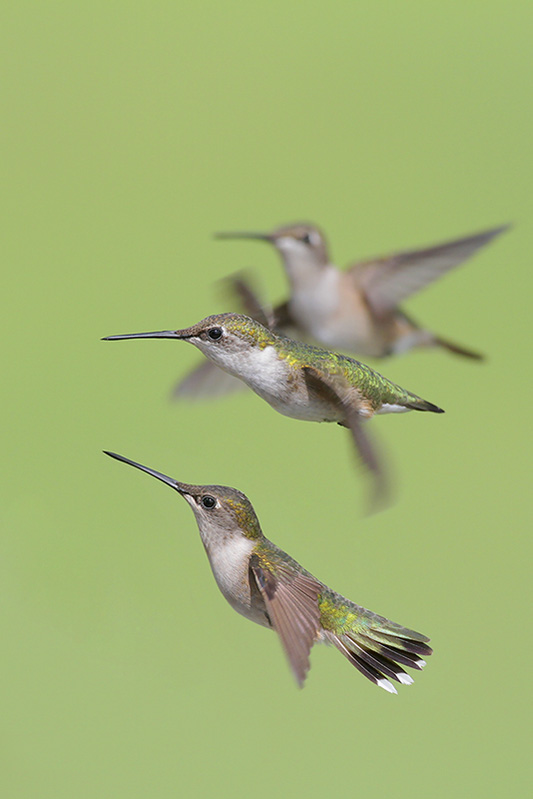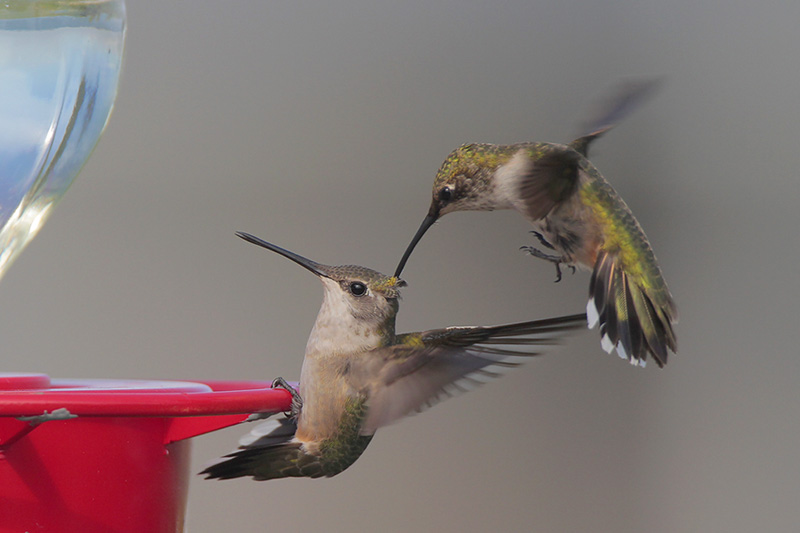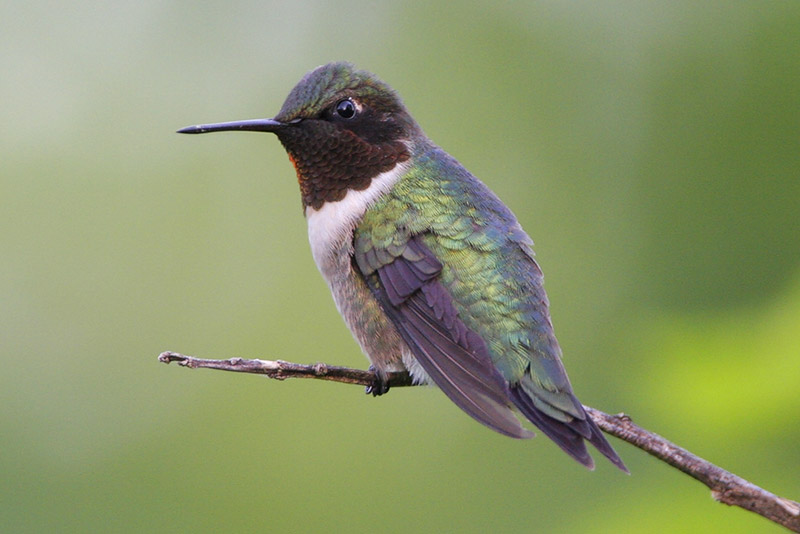





 |
 |
 |
 |
 |
 |
| Greg Lavaty | profile | all galleries >> My Blog >> Ruby-throated Hummingbird, Migrating Marvel 09-15-2012 | tree view | thumbnails | slideshow |

Ruby-throated Hummingbirds put on enormous amounts of weight before setting out across the gulf. These birds have been found to increase their weight by as much as 2/3 to give them enough fuel to make the trip. The frantic feeding can be witnessed at hummingbird feeders across the upper Texas coast in the fall months. Yesterday, I watched as many as 20 hummingbirds fighting for sugar water. Amazingly these tiny birds were able to consume nearly a quart of sugar water over a period of a few hours.

As you can see here, these little birds are quite fierce when it comes to protecting a good food source. It is not uncommon to see ruby-throats smashing into one another near a feeder. They will even go so far as to pull other hummingbirds off of a feeder. Things donít look so violent to the casual observer, but closer inspection reveals how tough these tiny creatures really are.

Hummingbirds use a unique figure eight wing movement that allows them to hover for long periods as well as fly backward, sideways and pretty much any direction they want. Watching the hummingbirds recently, I definitely got an eye-full of some unbelievable aerial acrobatics.

Another interesting feature of hummingbirds is their long beaks and tongues, adaptations aiding them in feeding on nectar. The tongue of a Ruby-throated Hummingbird can extend far beyond the tip of the beak, allowing them to probe deep into flowers to get at the sweet liquid within. Hummingbird tongues have grooves running along their length which carry the nectar up to the birdís mouth by capillary action, eliminating the need to suck it out of the flower (or bird feeder).

Iridescence is a feature that I strongly associate with hummingbirds. This is most obvious in Ruby-throated Hummingbirds on the adult male birdsí bright red gorget (throat) feathers. These gorget feathers the reason for the species name. The color of these iridescent feathers is the result of the structure of the feather barbules that amplify certain wavelengths of light. The thickness of microscopic discs, filled with air bubbles of a given size, on the barbules determine the color of the iridescence. The effect is strongly dependant on the angle of the light reflecting off of these feathers. In male Ruby-throated Hummingbirds the red color is only seen when viewing the bird head on. When these feathers are viewed from other angles they simply look black or gray.

Late August and September are prime times to put out hummingbird feeders on the Upper Texas coast. I was amazed how quickly birds found feeders in my back yard when I put them out, as well as how tolerant the birds were to my presence. If you decide to put hummingbird feeders you should use a sugar water solution made from one part sugar to four parts water. This keeps the solution thin enough to easily travel up the birdsí tongues and also makes the feeders less attractive to bees and wasps. It is also important to keep the sugar water fresh and feeders clean. In the summer heat the sugar water solution only lasts a few days before mold starts to show up. Once a week it is important to clean out the feeder. I find that I get the best results by cleaning with a dilute bleach solution so the birds stay healthy.

For more photos of Ruby-throated Hummingbirds please look here:
https://pbase.com/dadas115/rubythroated_hummingbird
| Guest | 12-Apr-2018 18:21 | |